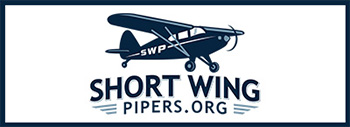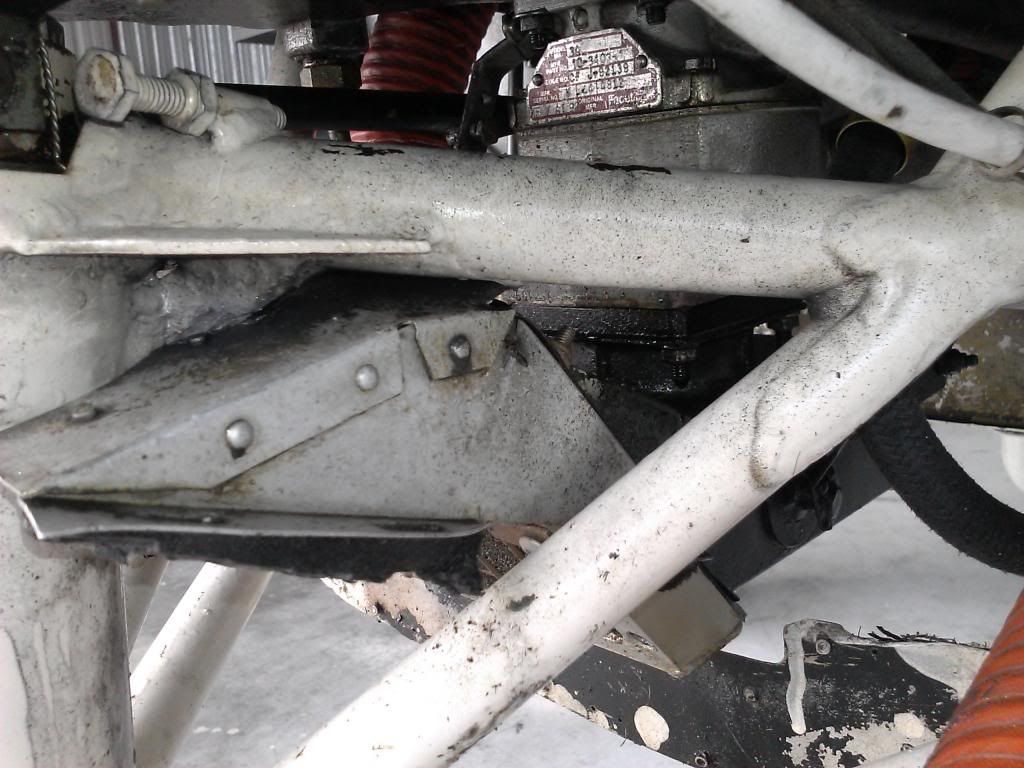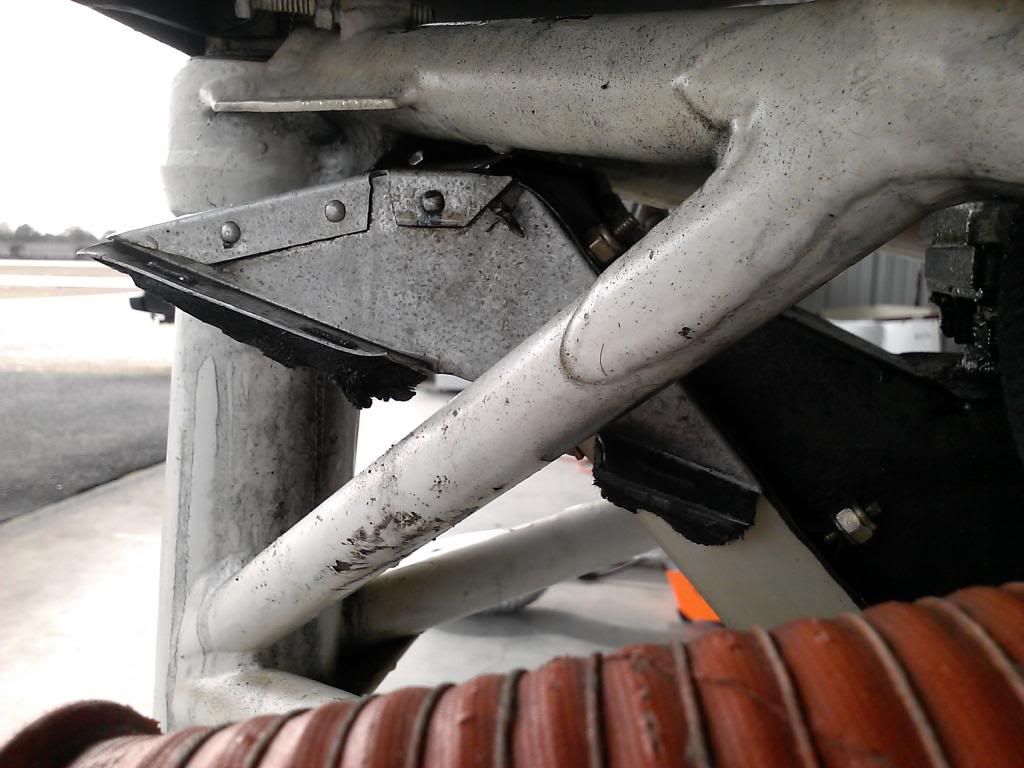Welcome! Becoming a registered user of ShortWingPipers.Org is free and easy! Click the "Register" link found in the upper right hand corner of this screen. It's easy and you can then join the fun posting and learning about Short Wing Pipers!

Thanks:
0

Likes:
0
-
 Re: CHT, thoughts, tips, HELP....
Re: CHT, thoughts, tips, HELP....
Andy you mentioned that the spark plug type probes read high. My engine must be running very cool. I have the plug type probes and while flying around yesterday I could lean the engine a bit and still hold the #3 cylinder easily to 350 degrees. So should I assume that it is actually running closer to 300 degrees?
-
Administrator


 Re: CHT, thoughts, tips, HELP....
Re: CHT, thoughts, tips, HELP....
Yes, the spark plug probes seem to run about 50 degrees hotter than the bayonet probes.
-
 Re: CHT, thoughts, tips, HELP....
Re: CHT, thoughts, tips, HELP....
Have read other other comments about the CHT problems dating back a year or so. Some would say CHT is 300 to 325 and my 1952 0290 D2 was running 375 to 400 on climb out( plug sensor) and 350 to 375 at cruise. . Annual last fall, went to a Pa-22 Ia, Bendix mags shot, could never keep them in time, rebuild shop, broken impulse spring, fiber boards cracked, worn steel drive gear. Ended up 2 rebuilt yellow taged mags set at 18 degrees. Engine baffling lower left side of engine, bad, rebuilt. Bottom cowling, full of patched cracks, ready to fall apart, replaced with a good used cowling. A rubberized cowling seal around the other edge of the firewall and now the cowling has a tight fit around the firewall. Went to get plane, weather was coming, I was the test pilot dummy, mags looked good,took off, circled the field several times, looked at the CHT, 325 degrees. Called him on the radio and said my CHT is down in the bottom 300 degree range, he replied, new mags, good timing, good baffling, and a tight non leaking cowling causes that. Now I run about 310 at cruise in this cool Ohio weather. Oil temps, good, controlled by duct tape winterizing kit.
Bob Ohio
-


 Re: CHT, thoughts, tips, HELP....
Re: CHT, thoughts, tips, HELP....

Originally Posted by
rmalone

Andy you mentioned that the spark plug type probes read high. My engine must be running very cool. I have the plug type probes and while flying around yesterday I could lean the engine a bit and still hold the #3 cylinder easily to 350 degrees. So should I assume that it is actually running closer to 300 degrees?
I installed a 4 cy cht because had nothing else to do, all spark plug probes, #3 was running 420-430 in climb and 395-405 in cruise, didn't seem to matter if I leaned agressive or just a little. bought a cylinder head bayonet probe and ran it concurrently with washer probe in #3 buy using lead from #1 cylinder, the maintained about 60 degrees 645 5 difference throughout a 45 minute test flight at different power settings. Left the bayonet probe in just because it made me feel good.
I think Lyc limits are based on a bayonet probe. My front cylinders in cruise are just under 300 and # 4 reads about 350, all this with spark plug probe, and the #3 now reads 330 with the bayonet probe. while it's apples and oranges in this case, I watch the numbers for any significant change from flt to flt to hopefully catch a change before it gets expensive.
"Progress is our most important problem"
-
 Re: CHT, thoughts, tips, HELP....
Re: CHT, thoughts, tips, HELP....
I know this is a really old thread but it is the most relevant to my situation.
My Tripacer has been flying for several years without the inlet scoop assembly (Piper part 13137) after a Brackett filter was installed. After reading these posts I want to have it refitted.
The photo posted by "Rocket" on 02-21-2012 is excellent but it doesn't show how the scoop is fixed in position. There's nothing on the Piper blueprints to show how it should be fixed either. My original air filter had two mounting holes and there were nut plates on the two lower holes on the air box. There are cutouts on the inlet scoop that appear designed to clear the upper filter fixings if used but nothing that looks like screw holes.
Can anyone help please?
Phil, Australia
-

 Re: CHT, thoughts, tips, HELP....
Re: CHT, thoughts, tips, HELP....
I currently have no sealing material around the bracket air filter, using a new Univair lower cowl. I haven't heard a convincing story here that that makes much difference. Any feed back on that one?
I have a probe on my #3 cylinder, with CHT running @ 400 on climbout. Took a look today at the fins under the top spark plugs on all cylinders today. Seems that I have overlooked some accumilation of trash, paint chips, and hair that had been undoubtedly plugging the fins that allow air to flow through between the intake and exhaust ports. It wasn't much volume of material, but doesn't take much to plug the the thin fins in this area. Pluggage was worse on the #3 cyl than the others. I didn't have my camera to take pics, but it's the area directly beneath the top spk plug. I had missed detecting this "stuff" due to not checking from a ladder, since the 22/20 engine sits up much high than the Tripe. I have not flown her since removing the stuff, but I will report back when the weather straightens up enough to check it out. I would bet that it will run significantly cooler. We'll see. I saw in one thread here where it was recommended to install washers under the baffling outside of the cylinder heads to allow more air flow. We'll keep that one on hold for now. I think this is a good discussion to keep going.
Lou
-

 Re: CHT, thoughts, tips, HELP....
Re: CHT, thoughts, tips, HELP....

Originally Posted by
vk6ad

I know this is a really old thread but it is the most relevant to my situation.
My Tripacer has been flying for several years without the inlet scoop assembly (Piper part 13137) after a Brackett filter was installed. After reading these posts I want to have it refitted.
The photo posted by "Rocket" on 02-21-2012 is excellent but it doesn't show how the scoop is fixed in position. There's nothing on the Piper blueprints to show how it should be fixed either. My original air filter had two mounting holes and there were nut plates on the two lower holes on the air box. There are cutouts on the inlet scoop that appear designed to clear the upper filter fixings if used but nothing that looks like screw holes.
Can anyone help please?
Phil, Australia
Phil,
It is mounted between the Brackett air filter housing and the airbox. The flange of the air-scoop is notched for the Brackett housing mount screws and is just held in pinched between the brackett housing and the airbox flange. At least that is the way mine is mounted. Don't know if it helps with CHT or not since I am "AU Naturel" on CHT/EGT.
Tony
-
 Re: CHT, thoughts, tips, HELP....
Re: CHT, thoughts, tips, HELP....
It lowered my CHT and oil temp.
-
-

 Re: CHT, thoughts, tips, HELP....
Re: CHT, thoughts, tips, HELP....
Well here we are in a new year....hope all have had a chance to get out and FLY!
CHTs continue to be a concern for us in our 160 hp Tri Pacer....since my last post we have had the carb off, overhauled with new SB directed float. We still have our bayonet probes on an EDM 700, and recently took a nice long 3.5 hour each way round robin XC trip to and from TX. With very cool OAT OF about 0-5 deg C at 4500 feet, cruising at 22 in MAP I WAS STILL SEEING ABOUT 375 deg on front cylinders, and about 405 on rear cylinders in cruise. If we don't cruise climb at about 100 mph and reduce MAP to about 24-25 inches MAP shortly after take off we will set off out alarm at 450 degrees on the JPI on the rear cylinders only. In cruise atv22 inches MAP I can lean 25-40 degrees LOP...which does lower all CHTS, and I am a fan of LOP operations after many discussions of the advantages at power settings less than 75%....we usually strive for 65% in cruise. I know there is quite a bit of controversial discussion on LOP ops, but if you read Mike Buschs articles, and see how LOP in cruise can delay the internal cylinder head pressures to a point in the combustion cycle to the period where the cylinder has passed top dead center and is starting to move in the direction where all its effort is moving the crank the way want....it makes alot of sense. I do have to use the slightest bit of carb heat to create some turbulence in the fuel air mixture stream in order to minimize the differences in the fuel air mix each cylinder is receiving.....but even at 40 deg LOP, I am seeing at or just under 400 on my rear cylinders in cruise. At peak EGT I see about 415, and at 75 deg ROP I see about 415 as well.
We plan to do an airspeed indicator test of our upper/ high pressure cowl, and lower/ low pressure cowl to start mapping the differential between these two areas....my early research indicates we should be striving for 7 inches of mercury difference....using an airspeed indicator to chart and approximate this differential.
Is anybody with a 4 cyl bayonet probe monitor in a Tri Pacer...which has a diffent cowl than the Pacer... seeing significantly different numbers than these. Has anyone experimented with an augmenter tube or vents to decrease pressure on the low pressure side of the cowling? Any other ideas? Sure do appreciate all the inputs, assistance, and suggestions....
Mark Srevens. 228-424-3768 cell in So. Miss.
 Posting Permissions
Posting Permissions
- You may not post new threads
- You may not post replies
- You may not post attachments
- You may not edit your posts
-
Forum Rules


 Thanks:
Thanks:  Likes:
Likes: 


 Reply With Quote
Reply With Quote







